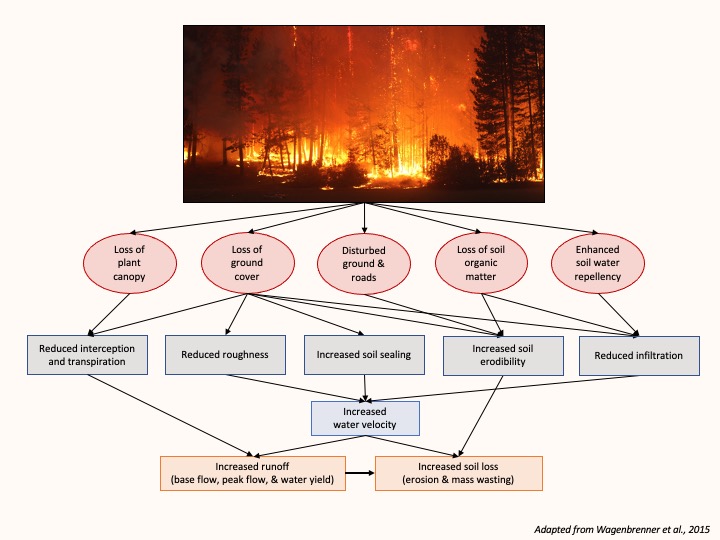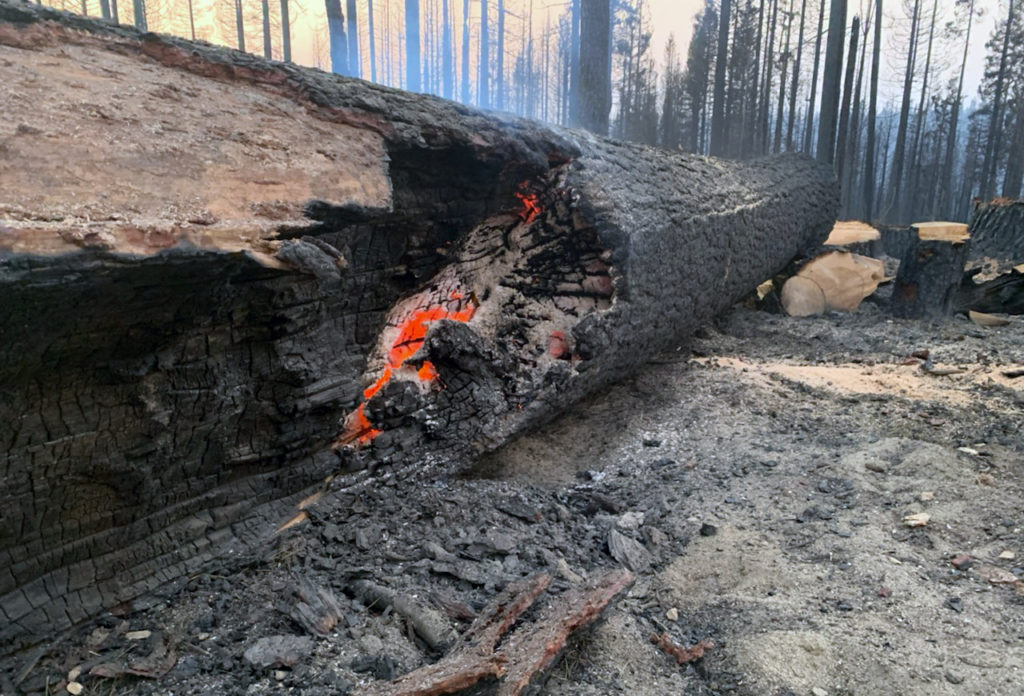A fire’s impact on the land doesn’t end when the smoke clears and the flames are extinguished. Fire makes lasting changes on the land—all the way down to the physical properties of the soil—that can be not only detrimental to watershed health but also dangerous for downslope communities.
2020’s unprecedented fire season is coming to a close, so the time is right to consider what happens to watersheds once they have burned and options to mitigate negative post-fire impacts.

Fire doesn’t just affect the forest canopy—the entire landscape, down to the physical properties of the soil, is changed by fire. Fires also result in a loss of ground cover and organic matter in soil. Soil becomes more water repellent after fire, and the ground and nearby roadways are disturbed by firefighting efforts. These effects lead to reductions in water use by vegetation and water infiltration into the soil, while the soil itself becomes more sealed and erodible. Water can run over the landscape more quickly, taking more soil with it when it flows. All of this leads to the potential for erosion and mass wasting events, like landslides and debris flows.
These impacts of fire can be long-lasting. A recent study investigating the impacts of timber harvests and control fire in the Pacific Northwest shows that the effects of landscape disturbance, like a clear cut or wildfire, can linger in a watershed for decades. For example, the changes to the amount of sediment in a watershed are most pronounced in the first few years following harvest, but it can take up to twenty years for a watershed to fully recover to pre-disturbance conditions. Changes in sediment supply from ground disturbance and the loss of soil strength due to a lower organic matter content and root binding can overwhelmingly dominate the post-fire sediment production. Recovery efforts should emphasize on not only minimizing the runoff before it enters water ways but also enhancing soil strengths.
There are several methods for mitigating erosion risk after a fire. A few of the most effective approaches include:
- Mulching: Science shows that mulch is the most effective erosion control treatment because it replaces the ground cover burned away by the fire, reducing first year post-fire erosion rates by as much as 80%.
- Revegetation: Replanting and seeding a burned area depends on fire severity and the dominant vegetation type. This is the most commonly used method to increase reduce erosion by increasing vegetative cover on the landscape.
- Walls/barriers: Constructed barriers of sandbags, concrete, logs, or other materials slow runoff, trap sediment before it enters waterways, and increase the infiltration of water into the soil.
Done in the critical years immediately following fire, these methods can drastically minimize the impacts of erosion.
For additional information about mitigating post-wildfire watershed impacts, please visit:
- Effects of post-fire salvage logging and a skid trail treatment on ground cover, soils, and sediment production in the interior western United States, Wagenbrenner, et al. 2015
- Forest Recovery, University of California Cooperative Extension
- Recovering from Wildfire: A Guide for California’s Forest Landowners, University of California Agriculture and Natural Resources
- Wildland Fire in Ecosystems: Effects of Fire on Soil and Water, United States Forest Service
- How Wildfire Threatens U.S. Water Supplies, United States Geological Survey
This post was written by Jaquelyn Lugg and Safeeq Khan and originally published in the Tulare Basin Watershed Partnership eNews in November 2020.

